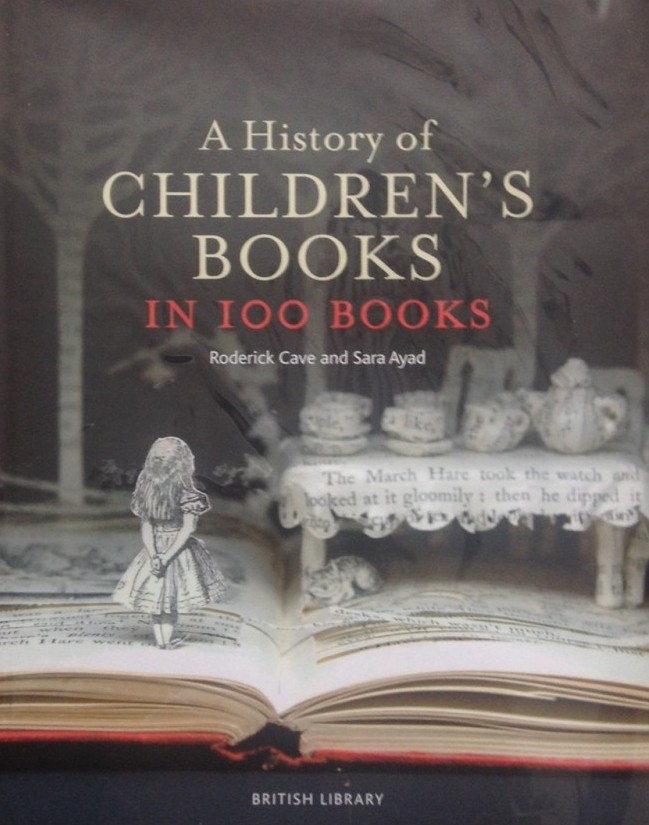Inspiring Young Readers
 posted on 30 Aug 2021
posted on 30 Aug 2021
A History of Children’s Books in 100 Books by Roderick Cave and Sara Ayad
Published in 2017 by The British Library, A History of Children’s Books in 100 Books is the kind of sumptuous volume they do so well. Produced in a generous, larger format on a thick gloss paper and heavily illustrated in colour, it could easily have become little more than another coffee-table book to thumb through. But that’s not at all what we have here.
I picked the book up thinking that it was going to be a catalogue of one hundred books selected (perhaps idiosyncratically) by the authors and set out in a way that gave each book its own page, providing an image of the first edition and a short summary of the plot. You probably know what I mean – there are plenty of books out there designed in that way. However, this book is a lot more ambitious and is really an extended examination of children’s literature starting with the origins of dedicated children’s writing and publishing and concluding with classics from the second half of the twentieth century.
The hundred books referred to in the title are used to illustrate thematic developments in children’s literature – for example, Jean De Brunhoff’s Babar and Katherine Hale’s Orlando are used as examples of the section entitled ‘Urbane Animals’:
“Some authors write about animals as wild, red in tooth and claw. In others’ books, they are really people in disguise. Some of the most effective stories have urbane, sophisticated characters as their protagonists.”
The range of the book is also impressive and doesn’t limit itself to British and American literature but takes in wider – predominantly European – literature that, in translation, found its way into the British reading market. There’s also a willingness to look at books in a range of formats: the educational book, the mechanical (or pop-up book), books that are more toys than books and books in their supposedly indestructible form (rag and horn).
What I also like is that the 100 books aren’t just the usual suspects, the authors uncover and showcase books that have been tucked away and largely (undeservedly) forgotten. Dr Oliver Tearle writing in his Dispatches from The Secret Library also notes this use of the more obscure:
“Cave and Ayad argue that Charles Bennett’s charming Nine Lives of a Cat: A Tale of Wonder (1860) deserves to be revived: it was popular throughout the nineteenth century but fell out of print, yet it was an innovative book in which, alongside the text and illustrations, there was a representation of an object which connects with the story. The connection between the object and the story was left for the young reader to ‘find out’. Such forgotten gems are a regular feature of A History of Children’s Books in 100 Books ....and along with the beautiful colour pictures and the depth of research displayed in the accompanying text, make this book both an entertaining and edifying addition to any library – like so many of the children’s books it discusses, A History of Children’s Books in 100 Books manages to entertain us just as it teaches us something new.”
This is a book you can read from cover to cover but it’s also one you can dip into to read specific sections and it’s also a guide for those who might not be over-familiar with children’s literature but want to explore the terrain. For children’s book collectors there are also some great ideas here about where to focus your time when you’re planning the building up of your collection.
The book is only currently available in hardback but copies can be found for under £15 and that makes this an absolute bargain.
Terry Potter
August 2021